[Butterweeds and Groundsels: The Genera Packera and Senecio East of the Cascade Mts. of Oregon and Washington]
Falsegold Groundsel, Streambank Butterweed
Packera pseudaurea var. pseudaurea
Synonym: Senecio pseudaureus var. pseudaureus)
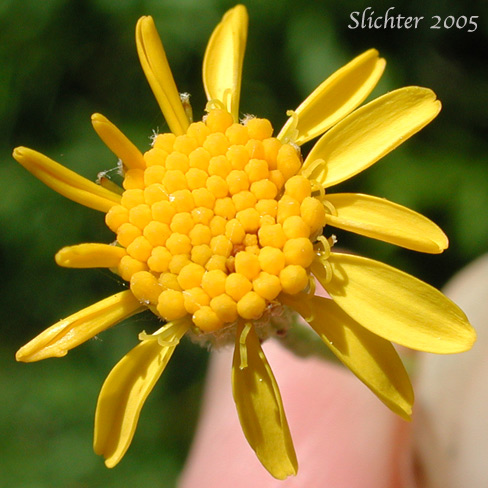
The photo above shows a close-up view of the flower head (from directly above) of streambank butterweed as seen in meadows immediately to the north of Hellroaring Creek adjacent to the Island Springs Trail #66 on Yakama Nation lands at the southeastern corner of Mt. Adams.........July 17, 2005.
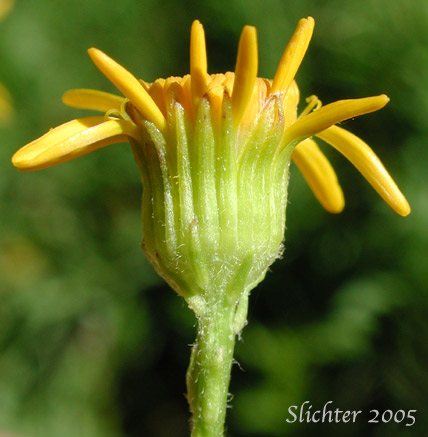 The photo at right shows a close-up side-view of a flower head and its involucral bracts of streambank butterweed as seen in meadows immediately to the north of Hellroaring Creek adjacent to the Island Springs Trail #66 on Yakama Nation lands at the southeastern corner of Mt. Adams.........July 17, 2005.
The photo at right shows a close-up side-view of a flower head and its involucral bracts of streambank butterweed as seen in meadows immediately to the north of Hellroaring Creek adjacent to the Island Springs Trail #66 on Yakama Nation lands at the southeastern corner of Mt. Adams.........July 17, 2005.
Characteristics:
Streambank butterweed is a fibrous-rooted perennial arising 30-120 cm from
a rhizome. It is at first slightly covered with loose, tangled hairs, but soon
the herbage is smooth or glabrous. The basal leaves are thin, serrate margined,
long-petioled, and with bases tending to be cordate, subcordate, or truncate.
The stem leaves are few and reduced in size upwards on the stem. The stem leaves
are noticeably serrate margined, with the blade narrowing towards the base with
deeply incised margins. The blades of the basal leaves vary from 3-8 cm long,
while those of the upper leaves are much reduced in size
The flower heads are few to numerous, with the disk usually 8-13 mm wide and
the 5-8 yellow rays 6-10 mm long. The involucre is 5-8 mm tall with 18-22 bracts.
Habitat:
Streambank Butterweed is found along moderate to high elevation streambanks,
in wet meadows, and in other wet areas in the mountains.
Range:
Streambank butterweed is found from British Columbia south to California,
and east to Saskatchewan and New Mexico.
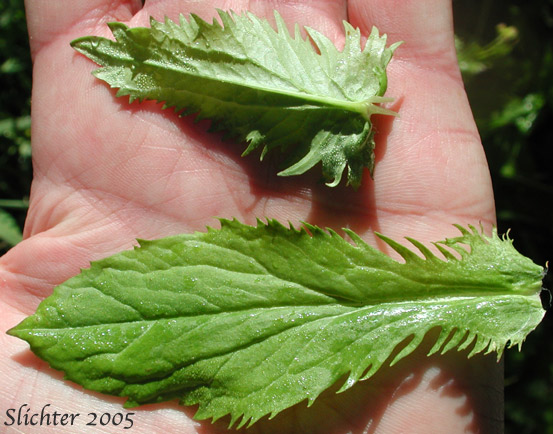
The photo above shows a close-up view of two stem leaves of streambank butterweed as seen in meadows immediately to the north of Hellroaring Creek adjacent to the Island Springs Trail #66 on Yakama Nation lands at the southeastern corner of Mt. Adams........July 17, 2005. Note that the bases of the stem leaves cut deeply toward the midvein, leaving numerous narrow lobes.
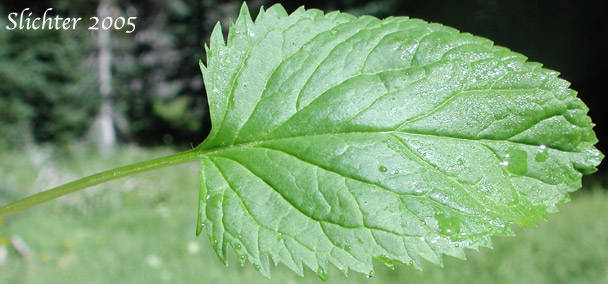
The photo above shows a close-up view of a basal leaf of streambank butterweed as seen in meadows immediately to the north of Hellroaring Creek adjacent to the Island Springs Trail #66 on Yakama Nation lands at the southeastern corner of Mt. Adams........July 17, 2005. Note the sharply toothed margins, the long petiole and the base of the blade, which may be heart-shaped, but here, veers sharply to the petiole.
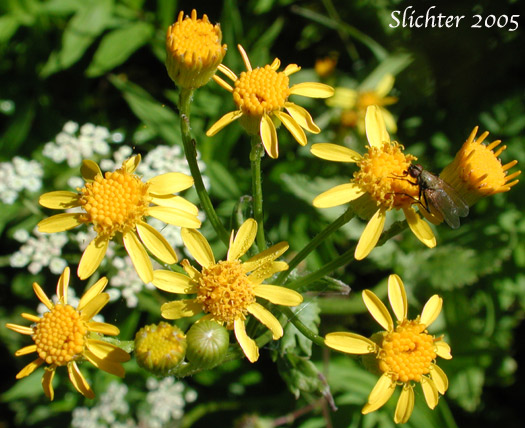
The photo above shows a view of the inflorescence (from above) of streambank butterweed as seen in meadows immediately to the north of Hellroaring Creek adjacent to the Island Springs Trail #66 on Yakama Nation lands at the southeastern corner of Mt. Adams..........July 17, 2005.
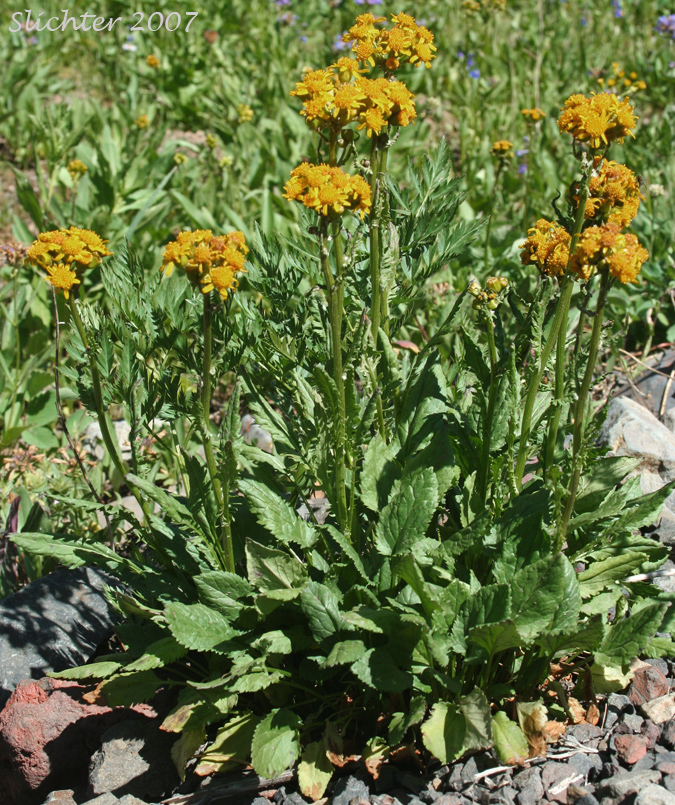 -
- 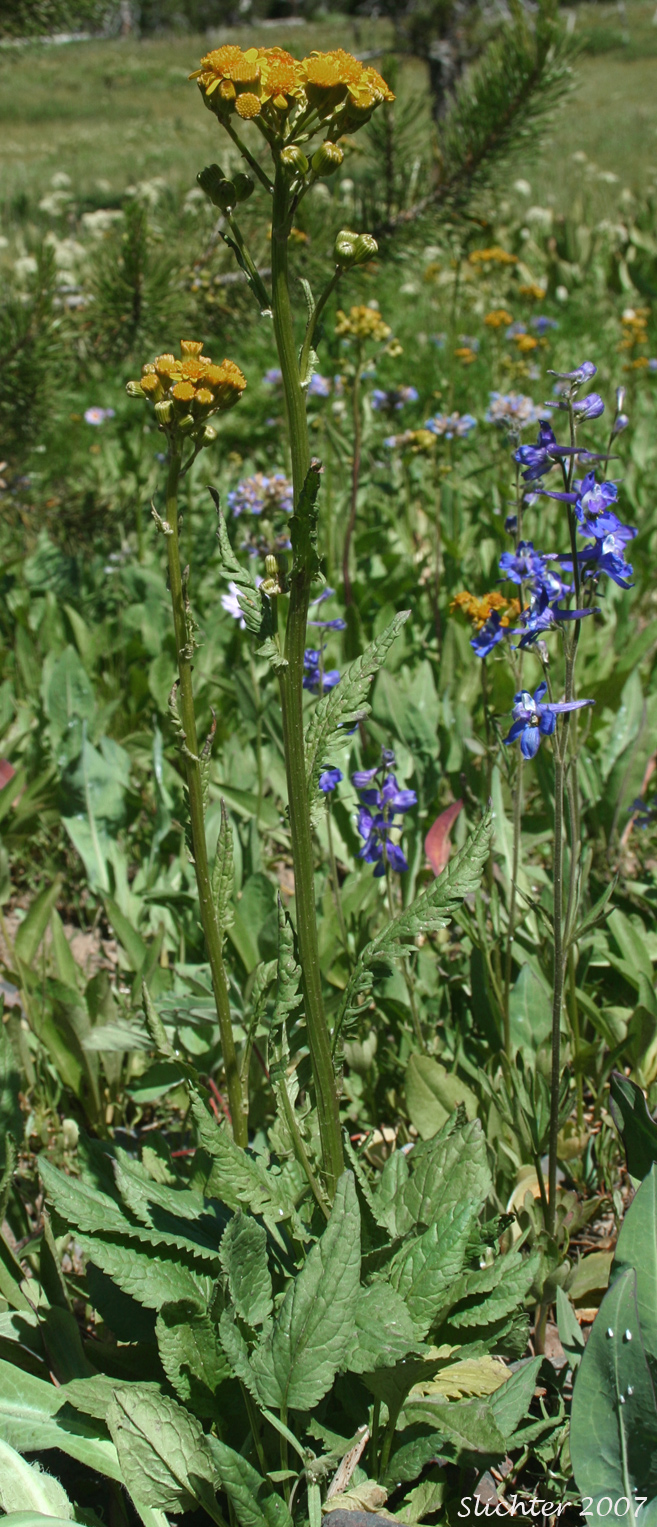
The two photos above show views of the form of streambank butterweed as seen along forest road #4240 about one-half mile north of Hat Pt. Road and Memaloose in the Hells Canyon National Recreation Area.........July 11, 2007.
Paul Slichter
 The photo at right shows a close-up side-view of a flower head and its involucral bracts of streambank butterweed as seen in meadows immediately to the north of Hellroaring Creek adjacent to the Island Springs Trail #66 on Yakama Nation lands at the southeastern corner of Mt. Adams.........July 17, 2005.
The photo at right shows a close-up side-view of a flower head and its involucral bracts of streambank butterweed as seen in meadows immediately to the north of Hellroaring Creek adjacent to the Island Springs Trail #66 on Yakama Nation lands at the southeastern corner of Mt. Adams.........July 17, 2005.